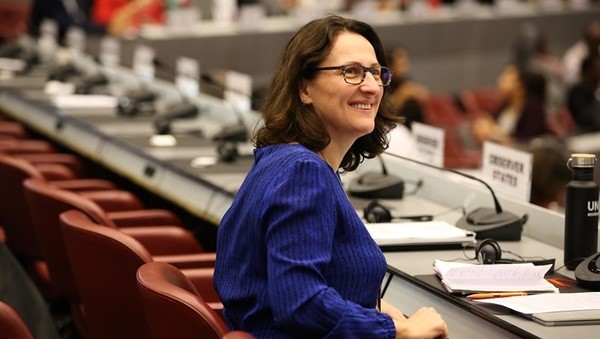As the first part of the fourth Conference of the Parties to the Minamata Convention on Mercury (COP4) is held online from November 1 to 5, 2021, the World Alliance for Mercury-Free Dentistry welcomes the growing momentum to phase out the use of dental amalgam.

The Minamata Convention requires Parties to phase down the use of dental amalgam, a filling material that is 50% mercury. The next step is to prepare for the global phase-out, and there is movement to phase out this toxic and polluting product at the second in-person part of COP4 in Bali, Indonesia from March 21 to 25,2022.
Many countries have already phased out amalgam use, at least for children and other vulnerable populations. Now at COP4, the Africa region is proposing an amendment to the Minamata Convention that would generally phase out the use of amalgam in four steps, while the European Union is proposing an amendment to end of the use of amalgam in children, pregnant women and nursing mothers (aligning with current EU regulation).
In preparation for the discussion on dental amalgam at the second part of COP4, both the Minamata Convention Secretariat and the WHO have published documents on the issue.
Based on input from Parties and other stakeholders, the Minamata Secretariat has prepared a note with up-to-date information on mercury-free alternatives to dental amalgam. It states that mercury-free dental fillings “have satisfactory mechanical properties and require less cavity preparation than composites,” “are already widely used,” and “the price difference in restoring teeth with alternatives is relatively small.”
The WHO, for its part, presented its “Report of the Informal Global WHO Consultation with Policymakers in Dental Public Health“ ( 2021), which concludes: “The results of the consultation with policymakers in dental public health highlight that phase-down and even phase-out of use of dental amalgam is achievable, especially as effective, cost-effective and simple-to-use mercury-free alternatives are increasingly available.”
In the survey by the WHO, 14% of countries reported that they had completely phased out the use of dental amalgam, and in the Europe and Americas regions, as many as two-thirds of countries had either already phased out the use of dental amalgam or were expected to do so by 2025.
Preparing for a general amalgam phase-out, the WHO added glass ionomer cements, a mercury-free alternative to amalgam, to the Essential Medicines List in October.
“We urge all parties to consider this new information confirming that mercury-free alternatives to amalgam are effective, available and affordable,” advised Dr. Graeme Munro-Hall, Chief Dental Officer of the World Alliance for Mercury-Free Dentistry, a coalition of more than 50 organisations from all regions working to end the use of amalgam.
Dr. Munro-Hall added: “We need to follow the science and phase out amalgam.”
Dr Leslie Adogame, Executive Director, SRADeV Nigeria (also National Coordinator, World Alliance, Nigeria), said: “Phasing out the use of amalgam is especially important for developing countries where we do not have the infrastructure to collect, transport and store mercury waste from amalgam. Our resources will be used most cost-effectively if we transition to mercury-free alternatives.”
Ms. Siddika Sultana, Director, Asian Centre for Environmental Health, said: “The use of mercury-free dental fillings is critical to the health of women and children who are particularly vulnerable to the neurotoxic effects of mercury from amalgam, whether it is implanted in their teeth or polluting their environment.”
Ms. Siddika, who is also the executive director of Environment and Social Development Organization-ESDO, Bangladesh, added: “Parties should come forward to decide to eliminate mercury from dental amalgam and other products provision by the convention.“
Mr. Charles G. Brown, president of the World Alliance for Mercury-Free Dentistry, announced: “The World Alliance for Mercury-Free Dentistry looks forward to engaging face-to-face with Parties and other stakeholders at the upcoming COP 4.2 in Indonesia.”
